It’s our 9th day on MV Orion, and only my third post. In a lazy way we sailors have been too busy to bother with the outside world. While we’ve been at sea this past week there’s been a historic Royal Wedding and the routing of the ultimate bogeyman, Osama Bin Laden, but none of us have sighted a newspaper in days, nor switched on a television screen. Today we made a foray into Talbot Bay where natural beauty beckoned in all her glory.I felt poetic and longed for a well-thumbed copy of bush verses – “I love a sunburnt country” and musings of similar ilk. Who wouldn’t feel moved by the vistas and landscapes we saw on our outing today? Undulating ochre and black outcrops in aspics of aquamarine, sapphire and algae-green; soft, long grass bowing in the mildest of breezes; scribbles of cloud wafting across an intense blue sky.The weather has been idyllic: warm but not oppressively hot. Cut the Zodiac motor and sit still for a while as you listen to the occasional trill of a kingfisher piercing the silence and you begin to feel the heat beat down. Then we move again and nature’s air conditioning recommences, lulling one into another reverie. Comrades click wildly at the slightest sighting of an osprey, sea snake, wallaby or termite hill. Me? I’m a child of Africa. The “wildlife” here is far, far too subtle and sparse for me. I prefer to simply drink in the vast, impressive vistas. I will not be here again; nor will I see something so rugged and ancient again anytime soon.
And so much water everywhere, yet not a puddle to swim in. If there’s one constant yearning, it’s to swim in the luscious lagoons that lap temptingly around every corner. But it’s not too be: every now and then, a harmless looking “stick” turns out, on closer inspection, to be a croc, floating serenely for a moment on the water’s surface, its pale green eyes staring at us curiously as a film flicks backwards and forwards across its hooded orbs like a camera’s shutter.
We watch as it propels itself backwards and dips languidly below the water’s surface, reappearing moments later with its corrugated jaw pointed skyward and yawning open as it gulps down its gullet whatever is caught there for dinner.
Aboriginals and crocodiles: these are the hardy survivors of thousands and thousands and thousands of years. The Kimberleys is their terrain and us? We are merely trespassers.
One of the highlights of our “Dreaming” holiday-on-water was a helicopter ride from the mouth of the Hunter River to the Mitchell Falls. There is nothing more awesome than seeing rugged, natural landscape from the air, but a helicopter makes it especially accessible. With no doors or windows on our five-man bug in the sky – imagine, if you can, the awe with which natives must have viewed such a flying machine for the first time– we floated above the granite and sandstone rooftops and noted the slow-burning fires through the grassy brush of the plains. Then we reached the falls themselves, bursting over a wide two-tiered ledge into a frothing, white pool below. Splendid!
Our helicopter lands on the enormous, wide rocks at the top of the falls and we scramble across the rocky terrain to find the best vantage point to photograph the cascading water. Then, our appetite for visual recording sated, we strip off and plunge, at last, into the cool pools eddying between the rocks at the top of the plateau. Twenty minutes of sheer bliss ensue as we immerse ourselves in the cool, clear water, and paddle around, lapping up the sun, sky and endless horizon like darting, silvery fish.
The previous day we visited Jar Island and a cave of “Bradman” art which apparently pre-dates Aboriginal settlement. The figures are Modigliani thin with tasselled headdresses and feathery finery, and were possibly created by the Macassan people who travelled down from Java. What kind of people were these? How did they live? And where did they hail from? We can only imagine...
Yesterday, by contrast, we hiked up another hill (my recently operated knee behaving extremely well) to another cave where etchings of men, spirits, fish, dugongs and crocodiles glowed in ochre-pink as if they had been sketched yesterday. Nearby carbon dating suggests, in fact, that these paintings by the local Wandjina clan date back about 8,000 years.
I love one of the theories about ancient art postulated on this trip: namely, that artistic endeavour flourishes only in good times, not in bad. When people have plenty of food, and don’t have to hunt, they have time to scribble and scratch on the walls of rocky caves in order to tell their stories. But when water levels drop off and food is scarce, people struggle to survive and artistic representations decline.
Sounds like a plausible theory to me.
Tuesday, May 3, 2011
Subscribe to:
Post Comments (Atom)


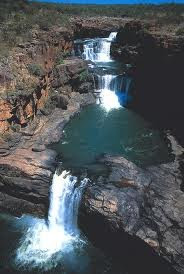

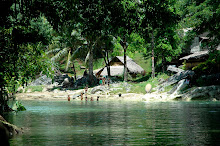


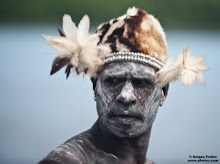
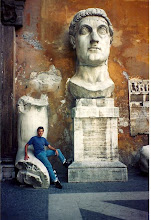

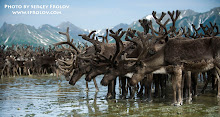




No comments:
Post a Comment